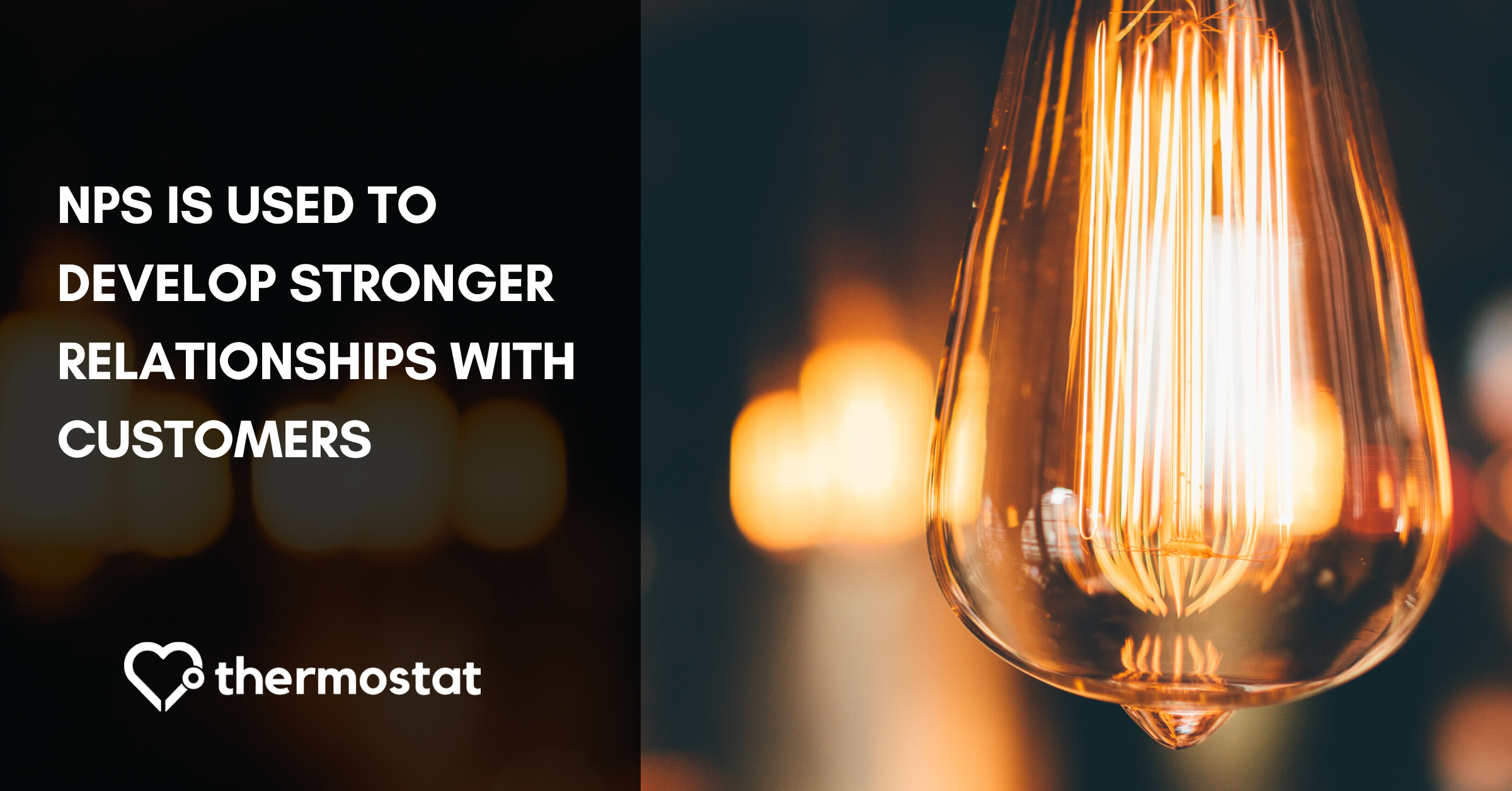What is NPS? 7 Things Customer Survey Newbies Should Know

Ian Landsman
November 4, 2019

Customer surveys are a powerful way to gather valuable feedback, generate new leads, and of course, increase revenue. But if you’re a newbie to the world of customer surveys, you may be overwhelmed by the sheer quantity of metrics to gather, assess, and track. Here’s the good news: There’s one metric that serves as a comprehensive indicator of customer satisfaction and future success. It’s called NPS, or Net Promoter Score.
Net Promoter Score is a great place to start for assessing levels of customer satisfaction and loyalty, improving your product or service, and projecting future growth for your company. But what is it, exactly?
In this article, we’ll dive into seven things you need to know before you get started on NPS, and give you some tips on how to use this powerful metric to your advantage.
Blog readers get %5 off paid plans for life with code: blog
#1: NPS stands for Net Promoter Score.
In 1993, a marketing strategist named Fred Reichheld developed a system for measuring not just how satisfied customers are with a brand, but how likely they are to recommend the brand to others.
The resulting metric became known as Net Promoter Score, or NPS.
Since then, NPS has gained momentum as a metric with near-inestimable value. It’s collected, assessed, tracked, and implemented across multiple industries. It’s used to report on growth, improve core processes, and train employees. And it’s a core part of company culture at major corporations like American Express, Allianz, and Charles Schwab.
Most importantly, NPS is used to develop stronger relationships with customers, with a track record for generating greater levels of satisfaction, loyalty, and enthusiastic advocacy.
#2: NPS is so much more than a customer satisfaction metric.
Besides NPS, you may have heard of other customer satisfaction metrics like CSAT (Customer Satisfaction Score), CES (Customer Effort Score), CAC (Customer Acquisition Cost), and churn rate.
CSAT simply measures how well your product or service is meeting the expectations of your customers. CES measures how easy (or difficult) it is for your customers to engage with your company. CAC measures the cost of acquiring new customers. Finally, churn rate shows the pace at which you are losing customers, a trend that is more than likely a sign of disappointed expectations or low satisfaction.
With all of these metrics available, why choose Net Promoter Score?
More than any other customer satisfaction-related metric, NPS is a comprehensive indicator of customer satisfaction… and future success.
Companies have found that by measuring NPS, they’re not only able to measure how happy their customers are with their product or service, but also able to assess them on several other key metrics: the strength of their word-of-mouth marketing, their long-term loyalty, and their value to the business.
When Fred Reichheld developed the NPS system working alongside a team from global consulting firm Bain & Co, they performed 14 case studies to test different customer satisfaction questions.
In 11 of these 14 studies, Net Promoter Score proved to be the strongest indicator of actual customer behavior. In other words, NPS showed how likely a customer was to spend money, stay with the brand, refer others, and provide feedback.
#3: Net Promoter Score can be collected and calculated with just two simple questions.
NPS may produce rich, complex insights, but it’s simple to gather and calculate.
Two Simple Questions
- An NPS survey will start with this question:
How likely are you to recommend X to a friend, family member, or coworker?
Please provide your answer on a scale of 0-10 (0 being not likely, 10 being very likely).
- Then, customers are given an opportunity to explain their answer:
Please explain your answer.
The number produced from the first question will put your customers into one of three categories: Promoter (9 or 10), Passive (7 or 8), or Detractor (6 or below).
The Net Promoter Score Formula
Then, you’ll calculate Net Promoter Score using this formula:
% of Promoters - % of Detractors = Net Promoter Score
A positive score represents an increased chance that customers are happy with your brand and would recommend you to their friends.
A negative score shows that more of your customers are dissatisfied than satisfied, and you may have a greater likelihood of churn.
#4: Net Promoter Score should be tracked over time.
While collecting and gathering NPS just once (or once in a while) can be valuable, it’s infinitely more valuable to track this metric regularly over time.
Tracking NPS again and again can provide insight into how customer loyalty fluctuates in response to new products, updated features, tweaks to your customer service, or other changes. It also provides measurable results you can report to stakeholders in your brand or company: quantifiable proof that your brand is growing, and your success rate will continue to escalate.
Finally, an NPS survey serves as a valuable touchpoint for your customers to provide you with feedback and engage with your brand.
#5: Net Promoter Score can provide you with invaluable insights.
Your actual Net Promoter Score is extremely useful, but the “feedback” portion of your survey can also provide you with invaluable insight into the success of your customer experience and the quality of your product or service.
More than likely, a good portion of your customers will have specific opinions they want to share with you, and they’ll take the time to write them down.
In all likelihood, there will also be common themes that reflect both your strengths and weaknesses.
For example, you may notice a common theme of dissatisfaction with the navigability of your homepage. Acting on this insight by improving your website can help you to increase customer satisfaction, and maybe even turn detractors into passives (or better yet, promoters).
On the flip side, you may notice that most of your promoters purchase a specific product or package. In order to produce more promoters, leverage this particular product with a special marketing campaign or offer an upsell/cross-sell promotion.
At the end of the day, taking the time to identify common themes in your open-ended feedback — and then acting on those insights — can have an immeasurably positive impact on your business.
#6: The ultimate goal of NPS is to generate more promoters.
As its name suggests, the core objective of the Net Promoter Score is to increase your share of promoters.
Promoters are not just happy customers. They’re customers who are willing and ready to advocate for your brand and recommend you to friends and family. Promoters generally buy more from you, complain less, and stick with your brand over time.

In short, you want more promoters: high-value, low-cost customers who essentially provide you with free marketing.
Assessing your NPS can ultimately help you generate more promoters by a) identifying the characteristics of your current promoters, and b) providing you with the insight you need to convert passives (or detractors) into promoters.
Don’t forget to grab your “NPS Factsheet: A Breakdown of Net Promoter Score”!
#7: Using NPS software is the simplest way to measure, track, and assess your Net Promoter Score.
A customer survey program that’s optimized for NPS can help you to effectively deploy targeted surveys over time, and then collect, assess, and track results.
Thermostat provides comprehensive NPS software that can help you to deploy an NPS survey via email, popup, or link, or alternatively by using API + Zapier. It also gives you the capacity to store, track, and organize results — maximizing your ability to use NPS as a tool for increasing customer loyalty, improving your product or service, and creating more high-value brand advocates.
Blog readers get %5 off paid plans for life with code: blog
Our best articles, right to your inbox
